Organized by Hsin-Ai
Volunteer Interview
 |
||
|
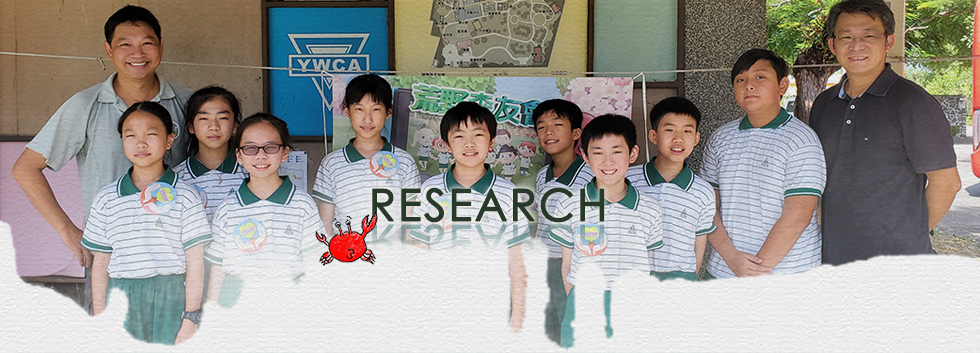
 |
||
|
| 1. | When did you get to know the Society of Wilderness (SOW)? And why did you become a volunteer? (I-Chia) |
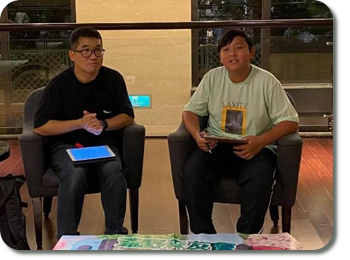
In the very beginning I was influenced by my wife as she was deeply touched after reading Dr. Lee, Wei-Wen’s book and seeing Mr. Xu, Ren-Xiu’s photographs. Therefore, she would like us to take the kids to join SOW’s parent-child group and learn in nature. Then I started to learn more about SOW, I discovered that besides the parent-child group, SOW also has many other groups, which everyone works together to protect the environment using different methods. In the end, I chose to join the interpretation group. I am mainly responsible for on-site tours at Garden City and Fuyang Eco Park, hoping to get more people to understand the natural ecosystem in our living environment.
| 2. | How do volunteers from the Parent-Child Group plan courses so that the four sub-groups “Little Ants”, “Dazzling Bees”, “Dashing Deers”, and “Flying Hawks” can step by step explore nature and protect the environment? (Tzu-Ning) |

SOW volunteers have different expertise and are capable of designing courses covering various topics. For example, outdoor observation, presentation, and photography, etc. Because children’s learning curve is different at different stages, therefore the courses are designed according to children’s ages.
Little Ants (kindergarten ~ 2nd Grade): Focus on contact and experiencing nature. Dazzling Bees (3rd Grade ~ 5th Grade): Inspire children to develop interest in the natural environment and become willing to explore ecosystems and the characteristics of different species. Dashing Deers (6th Grade ~ 8th Grade): Set themes to the activities, but the children get to decide the content under the supervision of the volunteers, and any unexpected situations can be a learning opportunity. Flying Hawks (9th Grade to 12th Grade): The “Hawks” have the ability to raise proposals for environmental issues and capable of planning and executing activities that are helpful to the environment. The focus at this stage is self-learning. We also try to collaborate with the high school curriculum and put environmental activities into their learning profile.
| 3. | Mr. Lu why did you pick Smallflower Beggarticks as your wild name? What is its characteristic? (Shih-Chi) |

All my family members decided to use native plants to be our wild names. Smallflower Beggarticks is a native plant. Many people do not know that Smallflower Beggarticks and Pilose Beggarticks are different plants. Smallflower Beggarticks are smaller in size and usually grow on the mountain, but Pilose Beggarticks usually grow on land. In addition, it takes about two weeks for Pilose to germinate, but it takes about a month for Smallflower to germinate. I hope everyone can be actively involved in protecting the environment and make Taiwan a better place!
| 4. | There are many animals resting in the wetland habitat under management of SOW. What is the animal you want to protect the most and why? (Chia-Kai) |
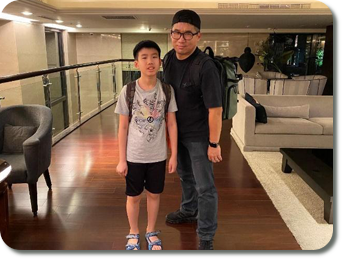
The answer is migratory birds. In Taiwan, people can spot various types of birds. These birds came to Taiwan where they could’ve stayed, inhabited, and foraged, but the habitat that could’ve nurtured the next generation has been destroyed. There is a type of migratory bird called Snipe. It is 20cm to 30cm in size. Snipe travels thousands of kilometers to Taiwan. The snipe has legs only 20cm long, unlike herons that can reach deeper in water, snipes often like to stay in shallow water and on beaches, laying eggs in the intertidal zone. If many people are on the beach, for example, snipes lay eggs on the Bali Wazihwei beach, but the eggs are often crushed by people when they drive the cars through the beach. There may be too much garbage left on the beach, snipes may not be able to forage successfully, or they may find something they cannot eat. Snipes are very cute; they often pretend they are injured in order to lead people away from the nest. Because they are not big enough to scare me away, they use their body and “pretend a fake injury” technique to lure me away.
| 5. | Captain Smallflower Beggarticks, in regard to wetland restoration work, which is most carried out by the parent-child group? From Little Ants to Flying Hawks, do you assign different works and tasks according to the age levels? Can you give some examples? (Tzu-Chun) |

Habitat restoration work requires more strength; therefore, it is not suitable for Little Ants. Taipei Branch’s second parent-child group had taken Dazzling Bees to Xinshan Dream Lake to clean the silt and remove the alien species of Leersia hexandra, making the water clearer and allowing the native species such as Paradise Fish to survive. At Dashing Deers, we took them to remove Mikania micrantha, a type of vine plant. In order to be exposed to sunlight, it can grow quickly and cover other plants, even trees. If we only remove the surface part, Mikania micrantha can multiply by five times in a year. Therefore, it requires the strength and height of high school students to remove the roots burying 40 cm ~ 60 cm underground. Once we reach the age of Flying Hawks, we let them choose the work they want to do. For example, they conducted research on Zhiben Wetland, suitability of solar energy development at Taoyuan Bade Pond and effect on migratory birds, how can we communicate and give our advice to the academics and government. We try to give them appropriate work at each stage.
| 6. | What are the requirements and standards set by SOW when selecting volunteers? Thank you! (Yu-Chen) |

When selecting volunteers, SOW does not have any requirements or standards. You don’t have to be an environmental expert or have any special skills. Anyone can become a SOW volunteer as long as he or she has a passion or interest for environmental protection. SOW is the largest environmental group in Taiwan. You get to work with people who share the same ideal and value as you. There is a volunteer position called promotion lecturer. SOW provides presentation training courses for lecturers. When corporates work with SOW, promotion lecturers will go to the company to provide environmental courses, it is an edutainment job.
| 7. | After being a volunteer for so many years, if you could have magical power, what would you want to accomplish the most? (Hsin-Ai) |
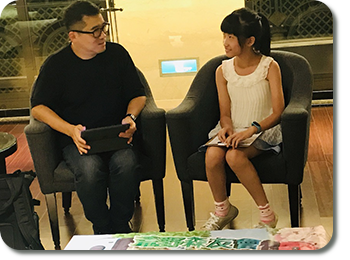
In regard to environmental protection, it is very difficult to do the job alone. I really want more people to understand and treasure the environment, and then take action to join us in protecting the environment. Environmental protection is a very complex issue that covers a wide range of scopes. If we can combine the ideas from many people, it will be easier to find a solution to the problem. Then we can start designing and executing action plans together.
| 8. | What is the key difference between a SOW parent-child group and scouts? (Hao-Cheng) |
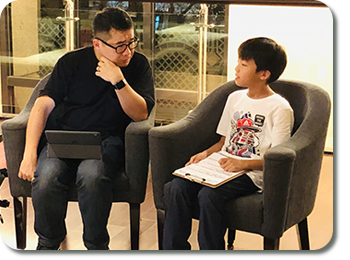
In the early stage of the SOW parent-child group, we did take scouts’ guidelines as reference. However, over the years the parent-child group have been providing environmental education that focus on environmental and ecological conservation concepts, while the scouts mainly focus on survival skills in the wild. Another key difference is that the teachers in the SOW parent-child group are parents, which can provide a more friendly learning environment that is more acceptable by children as compared to scouts, unless your parents happen to be the teachers for scouts.
| 9. | What is the reason that the SOW volunteer can stay passionate about environmental protection? Is there any secret to it? (Bo-Hsiang) |

First, I don’t think anyone can stay passionate about one thing for a long time because the feelings often go up and down through time. For example, we would get frustrated when we don’t see the desired result from our hard work done to the environment, or when our members have encountered difficulties. When the frustration hits, we utilize the strength of teamwork and continue to tell everyone that every effort is a contribution toward a better environment, because everyone has the power to protect the environment. So, we will continue to promote our ideals. Although every step we take reflects small improvement, the sharing and encouragement between team members will reignite our passions. Furthermore, the team’s belief and persistence are also the power that provide us the will to carry on our effort for a long time.
“Smallflower Beggarticks”, Head of SOW parent-child group, has joined SOW for over 10 years. During the 10-year period, he trained, learned, and grew stronger with Taipei Branch’s second parent-child group. With SOW parent-child group’s teaching tradition, he has become the mentor for many children. Many children have already become college students. During the interview we get to see Mr. Lu’s recognition and understanding of SOW’s value and mission. Through his explanation, we also realize the importance of SOW parent-child group’s contribution toward environmental education.
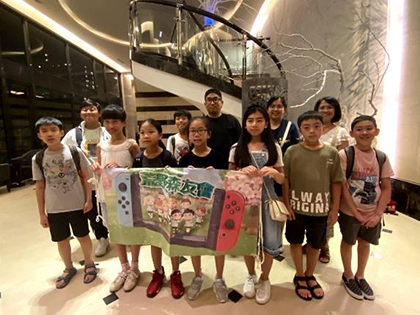
Source: Wilderness Crossing

Source: Wilderness Crossing
One thing worth mentioning is Mr. Lu’s student, with the wild name Pufferfish, came to visit his mentor on the day. When she heard that we were going to conduct an interview, she was excited to join. Pufferfish used to participate in the SOW parent-child group from Dazzling Bees to Flying Hawks. Her visit showed us the team spirit of SOW members, such friendship and connection had touched our heart. Just as SOW’s motto of “If you want to go fast, go alone, if you want to go far, go together”, it connects every volunteer who is willing to contribute to ecological conservation and work together to protect Taiwan’s natural environment.
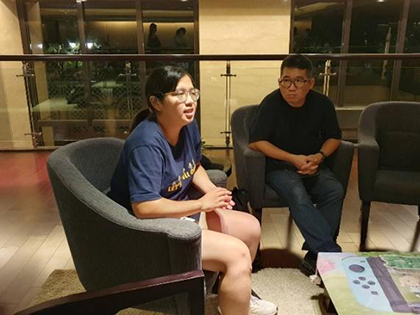
Source: Wilderness Crossing
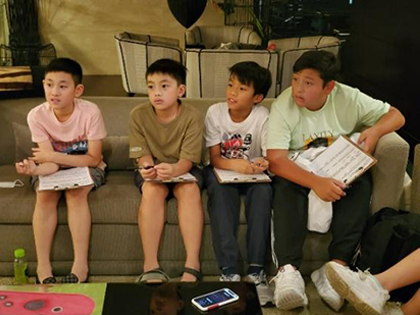
Source: Wilderness Crossing